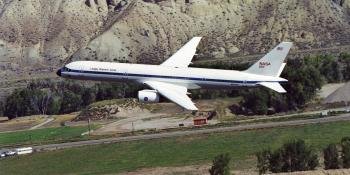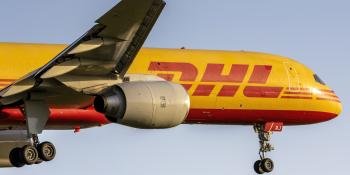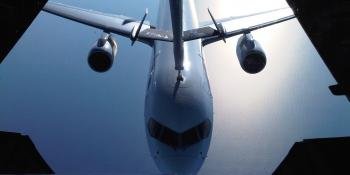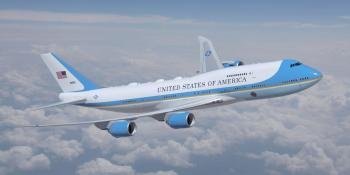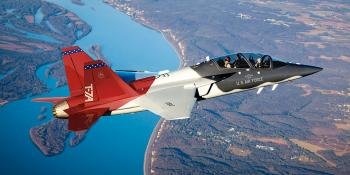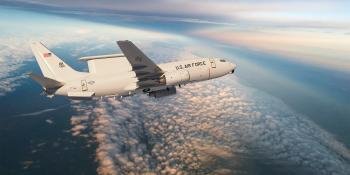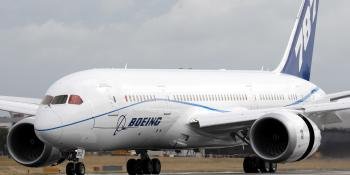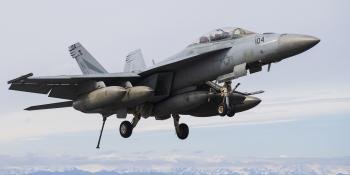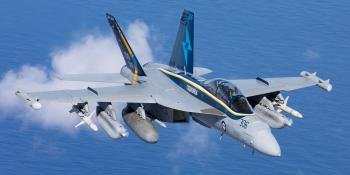Boeing
Boeing has a rich tradition in aviation which can be traced back over 100 years and today produces a diverse range of aircraft both commercial and military along with related products and services. It was nearly a very different story with furniture production saving the firm when 95% of America’s aircraft makers went out of business.
Boeing news, features and videos ...
The Boeing Company over the century
The Boeing Company can trace its origins back to founder William Boeing, who left Yale University in 1903 to enter the risky but potentially lucrative American northwest timber industry. It was during his time in Washington State that he developed a fascination with the new phenomenon of aviation. After encountering various early biplanes, Bill Boeing elected to produce his own with the simple brief – ‘to build a better airplane’.
FROM PACIFIC AERO PRODUCTS COMPANY TO BOEING AIRPLANE COMPANY
On July 15, 1916 he incorporated Pacific Aero Products Company and, under his guidance, the tiny company grew into a huge corporation of related industries. The rebranding of the firm to the Boeing Airplane Company in May 1917 came barely a month after the US had declared war on the German Empire. An order for 50 Model C seaplanes from the US Navy was a huge boost for the fledgling company but the end of the Great War in 1918 led to a glut of military surplus airframes flooding the market and plunged the aviation industry into recession.
Around 95% of America’s aircraft manufacturers went out of business and Boeing resorted to producing furniture to stay afloat. The founder’s refusal to give up on his vision for the future of aviation would eventually be vindicated in massive proportions. In 1922 Boeing received an order for 200 pursuit planes for the US Air Force – the company made a profit on the deal and never looked back.
Flushed with success, the firm entered the airmail sector in February 1927 through new affiliate airline, Boeing Air Transport, which flew 25 Boeing Model 40As under contract to the US Postal Service.
Work continued on new aircraft and, the following year, the firm introduced the Model 80 tri-motor. The type could carry 12 passengers and featured a host of innovations such as wall lamps, ventilation and heating, reclining seats, a soundproofed cabin, small buffet and washrooms with hot and cold water. It quickly become known as the ‘Pioneer Pullman of the Air’ and, although only 16 examples were built, they set a benchmark for quality.
The late 1920s marked a period of consolidation for Boeing, which was renamed United Aircraft and Transport Corporation in February 1929 after acquiring several aviation companies.
On the production side, the company turned its attention to new materials and proposed an all-metal aircraft, a low-wing monoplane with a circular fuselage. Commenting at the time, Bill Boeing said: “We must not dismiss any novel idea with the cocksure statement that it can’t be done. We are pioneers in a new science and a new industry. Our job is to keep everlastingly at research and experiment, and let no new improvement pass us by.” These bold but prophetic words have rung in the ears of generations of Boeing designers ever since.
The result was the Model 200, the world's first all-metal aircraft. Known as the Monomail, the sleek aircraft had an open cockpit, but incorporated three compartments able to hold up to 2,300lb of cargo. A second version, the 221, took flight on May 6, 1930 and featured a slightly longer fuselage able to accommodate six passengers. This heralded the start of the all-metal transport age.
Barely three years later, the bar was set even higher by the Model 247, the first commercial aircraft to incorporate retractable undercarriage. Although it could carry only ten passengers, the type had the capability to cross the US in just 20 hours with seven fuel stops; leading to a 60-aircraft order – worth an unprecedented $3.5m – from Boeing Air Transport.
The advancements introduced by the Model 247 were soon standard throughout the industry and were used to particularly good effect on the rival Douglas DC-2 and DC-3. Their emergence revolutionised the market – between 1936 and 1939, air travel in the US grew by 500%, with 90% of passengers flying on Douglas aircraft.
BOEING AIRPLANE COMPANY, UNITED AIRLINES AND UNITED AIRCRAFT CORPORATION
However, though United Aircraft was holding its own, changes were afoot. The Air Mail Act of 1934 restored competitive bidding in the sector and dissolved the holding companies that brought together airlines and aircraft manufacturers. This led the firm to be split into three smaller airlines – Boeing Airplane Company, United Airlines and United Aircraft Corporation. Disillusioned with the political and legislative processes that had almost forced the company out of business, Bill Boeing resigned as chairman and sold his shares.
Under the stewardship of Clairmont L Egtvedt, Boeing began studying larger and more complex aircraft. Engineer Wellwood Beall drew up the design for a four-engined flying boat measuring 106ft long, with a 152ft wingspan and capacity for 74 passengers and six crew.
With a range of 3,500 miles, the aircraft was pitched at Pan American Airways and, in October 1936, the carrier placed a $3m order for six of the newly named Model 314 Clippers. The type entered service in June 1939 and offered an extraordinary level of comfort – it had provisions for sleeping berths, a 15-person dining room and dressing rooms for men and women.
Boeing Military
Elsewhere, the overall downturn in Boeing’s commercial aircraft fortune was balanced by an upturn in military orders. Though the firm lost a competition for a new long-range bomber – the prototype Model 299 crashed during trials – the US Army Air Corps was so impressed by the type’s performance that it ordered 13 examples. The aircraft, which became the B-17 Flying Fortress, was eventually acquired in huge numbers and became one of the most iconic aircraft of World War Two.
Boeing applied much of the technology pioneered by the B-17 to a new airliner – the Model 307. Known as the Stratoliner, it was the first commercial transport aircraft to feature a pressurised cabin and, fitted with four turbo-charged Wright G-100 Cyclone engines, it completely outperformed the smaller Douglas designs, flying higher, faster and with a greater payload.
The Model 307 set new standards for speed and comfort but the loss of a prototype during a demonstration to Dutch carrier KLM in March 1939 was a major blow for the project and production stopped after just ten examples.
With sales of the Clipper flying boat also dwindling and, at the time, little prospect of a large order for the B-17, Boeing found itself in serious financial trouble. Rivals Lockheed and Douglas were already working on transcontinental airliners – the Constellation and DC-4 respectively – leaving Boeing in desperate need of new orders. It was the conflict in Europe that was to shape events.
As the situation worsened and the likelihood of American involvement in World War Two increased, orders for more B-17s were placed. Rather ironically, such was the urgency that Boeing contracted Douglas and Lockheed to produce the aircraft under licence. Work also started on an even more capable bomber, the B-29 Superfortress that proved decisive in the Pacific theatre and ultimately brought the war to an end with the dropping of two atomic bombs on Hiroshima and Nagasaki in August 1945.
These military aircraft projects were directly responsible for another revolution in aircraft construction – mass production. At its peak Boeing was producing 16 B-17s a day in Seattle.
With the conflict over, Boeing’s military orders dried up and the company was left playing catch-up to the Constellation and DC-4/6 families. It responded with the Model 377 Stratocruiser, a civilian variant of the C-97 transporter and itself derived from the B-29. Production spanned just 56 airframes but, with the war having spurred the development of some revolutionary new technologies such as swept wings and the jet engine, Boeing was already looking beyond its piston-powered airliner.
These innovations were first utilised on the B-47 Stratojet bomber, which crossed the continental US in less than four hours setting a new speed record of 607.5mph in the process. This, and the eight-engined B-52 Stratofortress that followed soon afterwards, gave Boeing a significant advantage in the development of a commercial jet airliner.
Combining military and civilian requirements in one aircraft
Lagging some way behind Britain and its de Havilland DH106 Comet, the US manufacturer opted for a single design that would meet both military and civilian requirements. Even then, it was a huge risk and led Boeing CEO Bill Allen to famously “bet the company” on the new type. The programme was given the go-ahead in 1952 and, at the cost of $16m, represented nearly all the profit the company had made since the end of World War Two.
Work started on the pioneering 367-80, nicknamed the ‘Dash 80’, at the manufacturer’s Renton, Seattle, facility in great secrecy. It emerged from the production line on May 15, 1954 and flew for the first time on July 15. The USAF was the first to commit to the aircraft – which entered service as the KC-135 Stratotanker – while the civilian variant was dubbed the 707, the first in a legendary line of ‘7X7’ series airliners.
Boeing has gone on to build an impressive range of airliners. This includes the 727 and 737, which transformed the short- and medium-haul sector. The latter has been in continuous production since 1967 with deliveries now numbering over 10,000. However, the latest versions collectively known as the 737 MAX family were grounded for a period after two fatal crashes until the manufacturer could rectify the Maneuvering Characteristics Augmentation System (MCAS). The company also made some other changes to the MAX unrelated to the accidents.
Boeing has used the 737 to offer business jet variants (as well as some of its larger airliners), for the airborne early warning & control (AEW&C) role (following on from the E-3) and also developed the P-8 Poseidon maritime patrol aircraft.
Boeing had forged a reputation for building large, complex aircraft but, even by its own standards, the 747 was massive. At the time of its roll-out in 1966, it was the largest aircraft in the world. The airframe was 225ft long and as tall as a six-storey building. In fact, it was so big that it required the construction of a dedicated 200 million cu ft assembly plant in Everett. The remarkable aircraft, which has been produced in several variants including the current 747-8 Intercontinental and 747-8 Freighter, opened up air travel to millions of people. However, dwindling sales led to Boeing announcing that production of this famous airliner would end in 2022.
The twin-engined 757 and 767 shifted the focus to operating cost. The aircraft feature nearly identical cockpits, therefore offering a common type rating for pilots, while the latter was instrumental in the development of Extended-range Twin-engine Operational Performance Standards (ETOPS). The 767 has been ordered as an air-to-air refuelling tanker by a number of countries and recently by the USAF under the name KC-46 Pegasus, though the latter variant has been in the aviation press a great deal due to a number of problematic issues.
The 777 was launched in 1990 and designed to replace older widebody airliners and bridge the capacity gap between the 747 and the 767. The latest variants have the family name 777X and more specifically there is the 777-8 and 777-9 – to date only the latter has taken to the air.
Boeing entered the new millennium facing a difficult choice – how would it build on the success of its ‘7X7’ series airliners and what form would the next-generation airliner take? While European rival Airbus opted for additional capacity in the shape of its double-deck A380, the US manufacturer chose speed.
Launched in March 2001, the twin-engined Sonic Cruiser was intended to fly at up to Mach 0.98, around 15-20% faster than every other airliner in service with the exception of Concorde. Unfortunately for Boeing, it was the wrong aircraft at the wrong time. Barely six months after the launch of the Sonic Cruiser, the world was rocked by the 9/11 terrorist attacks in the US. This sparked a major global downturn in passenger traffic and, reeling from huge losses, the airline industry was forced to reinvent itself with a renewed focus on fuel efficiency and lower operating costs. This spelled the end for the near-supersonic jet, but the programme was not a complete failure.
Boeing transferred much of the technology it had developed for the Sonic Cruiser to a new concept, the mid-sized ‘7E7’ which, the manufacturer said, promised to deliver “major breakthroughs in a lot of areas starting with the letter E, including efficiency, economics, environmental performance, exceptional comfort and convenience, and e-enabled systems”. The outcome was the 787 Dreamliner, which has proved popular with airlines.
In 1996, Boeing acquired Rockwell’s aerospace and defence units and the next year merged with McDonnell Douglas. The name Boeing was retained and the MD-95 renamed the Boeing 717. In addition to Boeing’s own military programmes, the new larger company now also had within its portfolio aircraft such as the F-15, F/A-18 Super Hornet and C-17 Globemaster III. Other military types currently produced by Boeing include the AH-64 Apache and Chinook, while a number of collaborations have proved fruitful such as working with Bell on the V-22 Osprey and Saab for the T-7A Red Hawk.
